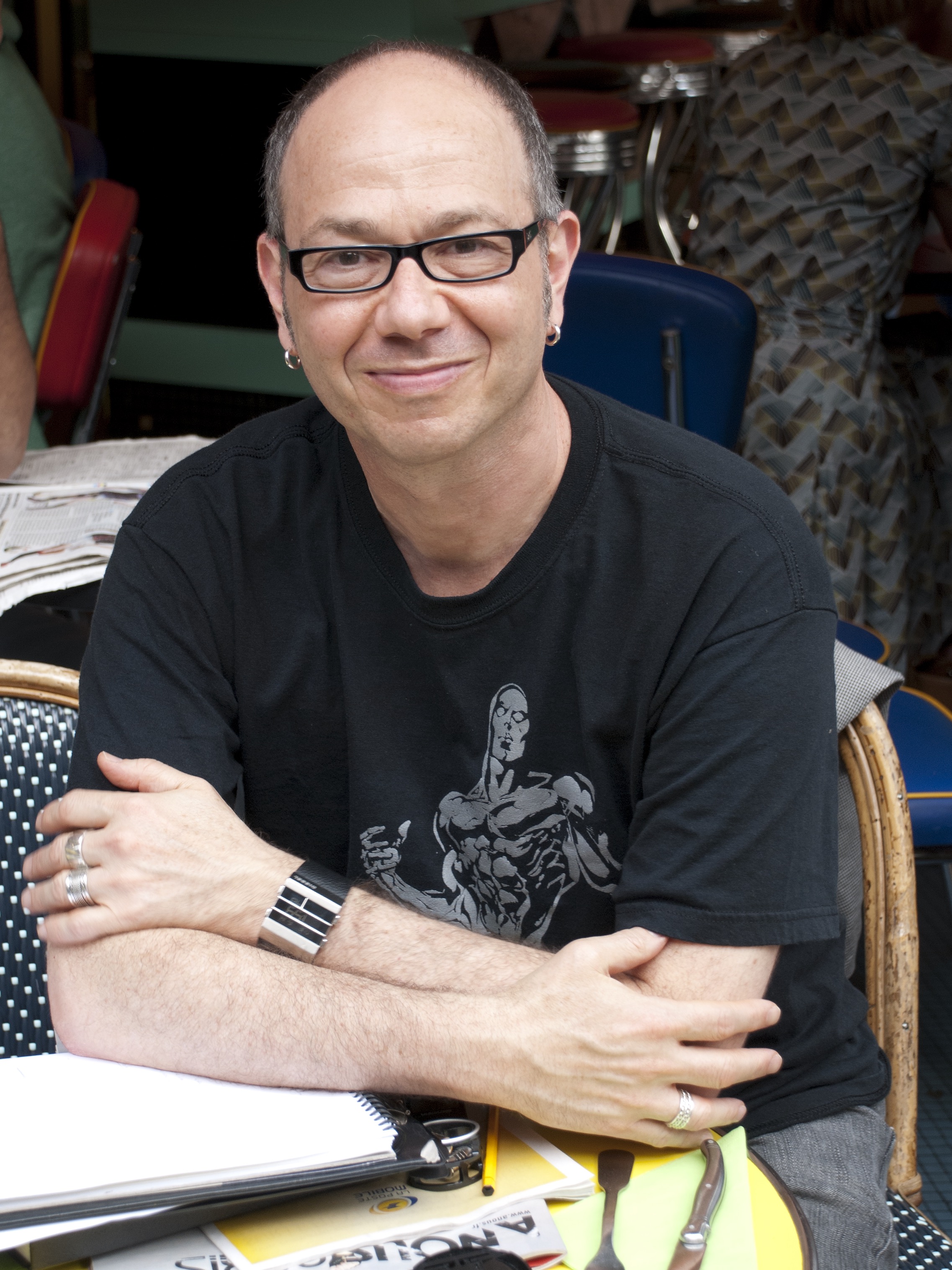Eduardo Kac - Biographical Note
Bio(300 words) or Chronological Bio(2 pages)

Eduardo Kac is internationally recognized for his telepresence and bio art. A pioneer of telecommunications art in the pre-Web '80s, Eduardo Kac (pronounced "Katz") emerged in the early '90s with his radical works combining telerobotics and living organisms. His visionary integration of robotics, biology and networking explores the fluidity of subject positions in the post-digital world. His work deals with issues that range from the mythopoetics of online experience (Uirapuru) to the cultural impact of biotechnology (Genesis); from the changing condition of memory in the digital age (Time Capsule) to distributed collective agency (Teleporting an Unknown State); from the problematic notion of the "exotic" (Rara Avis) to the creation of life and evolution (GFP Bunny).
At the dawn of the twenty-first century Kac opened a new direction for contemporary art with his "transgenic art"--first with a groundbreaking transgenic work entitled Genesis (1999), which included an "artist's gene" he invented, and then with his work GFP Bunny, in which he created a fluorescent rabbit called Alba (2000).
In 2017, Kac made Inner Telescope, an artwork in outer space with the cooperation of a French astronaut and the support of L'Observatoire de l'Espace, the cultural lab of the French Space Agency, and the European Space Agency (ESA). In 2024, Kac's Ágora flew to deep space aboard the Centaur rocket and is now in a perpetual heliocentric orbit. Kac's Adsum landed on the Moon in 2025.
From his first experiments online in 1985 to his current convergence of the digital and the biological, Kac has always investigated the philosophical and political dimensions of communication processes. Equally concerned with the aesthetic and the social aspects of verbal and non-verbal interaction, in his work Kac examines linguistic systems, dialogic exchanges, and interspecies communication. Kac's pieces, which often link virtual and physical spaces, propose alternative ways of understanding the role of communication phenomena in creating shared realities.
Kac merges multiple media and biological processes to create hybrids from the conventional operations of existing communications systems. Kac first employed telerobotics in 1986 motivated by a desire to convert electronic space from a medium of representation to a medium for remote agency. He creates pieces in which actions carried out by Internet participants have direct physical manifestation in a remote gallery space. Often relying on the indefinite suspension of closure and the intervention of the participant, his work encourages dialogical interaction and confronts complex issues concerning identity, agency, responsibility, and the very possibility of communication.
Kac's work has been exhibited internationally at venues such as New Museum, New York; Pompidou Center, Paris; MAXXI-Museum of XXI Century Arts, Rome; Mori Art Museum, Tokyo; Reina Sofia Museum, Madrid; Power Station of Art, Shanghai; and Seoul Museum of Art, Korea. Kac's work has been showcased in biennials such as Venice Biennale, Yokohama Triennial, Japan; Biennial of the End of the World, Ushuaia, Argentina; Gwangju Biennale, Korea; Bienal de Sao Paulo, Brazil; International Triennial of New Media Art, National Art Museum of China, Beijing; and Bienal de Habana, Cuba. His work is in the permanent collections of the Museum of Modern Art-MoMA, New York; The Metropolitan Museum of Art, New York; Tate Modern, London; Reina Sofia Museum, Madrid; the Victoria & Albert Museum, London; Frac Occitanie—Regional collections of contemporary art, Les Abattoirs—Museum of Modern and Contemporary Art, Toulouse, France; the Valencian Institute of Modern Art-IVAM, Spain; the ZKM Museum, Karlsruhe, Germany; Art Center Nabi, Seoul; and the Museum of Contemporary Art of São Paulo, among others.
Kac's work has been featured both in contemporary art publications (Flash Art, Artforum, ARTnews, Kunstforum, Tema Celeste, Artpress, NY Arts Magazine) and in the mass media (ABC, BBC, PBS, Le Monde, Boston Globe, Washington Post, Chicago Tribune, New York Times). Kac has received many awards, including the Golden Nica Award, the most prestigious award in the field of media arts and the highest prize awarded by Ars Electronica. He lectures and publishes worldwide. His work is documented at ekac.org.
Kac is a member of the editorial board of the journal Leonardo, published by MIT Press. Kac's writings on art, which have appeared in several books and periodicals in many countries, have been collected in two volumes: Telepresence and Bio Art : Networking Humans, Rabbits and Robots (Ann Arbor: University of Michigan Press, 2005) and Luz & Letra (Rio de Janeiro: Contra Capa, 2004). Kac's poetry is collected in Hodibis Potax (Édition Action Poétique, Ivry-sur-Seine (France) and Kibla, Maribor (Slovenia), 2007). Books about Kac's work include: Eduardo Kac: Move 36, Elena Giulia Rossi, editor (Paris : Filigranes Éditions, 2005), The Eighth Day: The Transgenic Art of Eduardo Kac, Sheilah Britton and Dan Collins, eds. (Tempe: ISA/ASU -- New York: DAP, 2003), Eduardo Kac (Valencia: IVAM, 2007), and Life, Light & Language (Enghien-les-Bains Art Center, France). Kac's videos were released by the Video Data Bank, Chicago, in a 3-DVD boxed set entitled Eduardo Kac: Telepresence, Bio Art & Poetry [1980-2010].